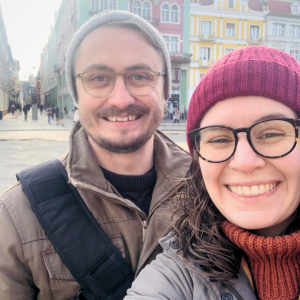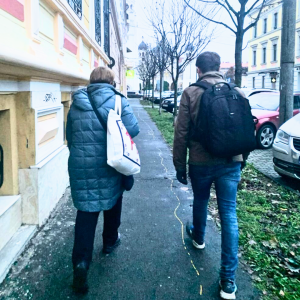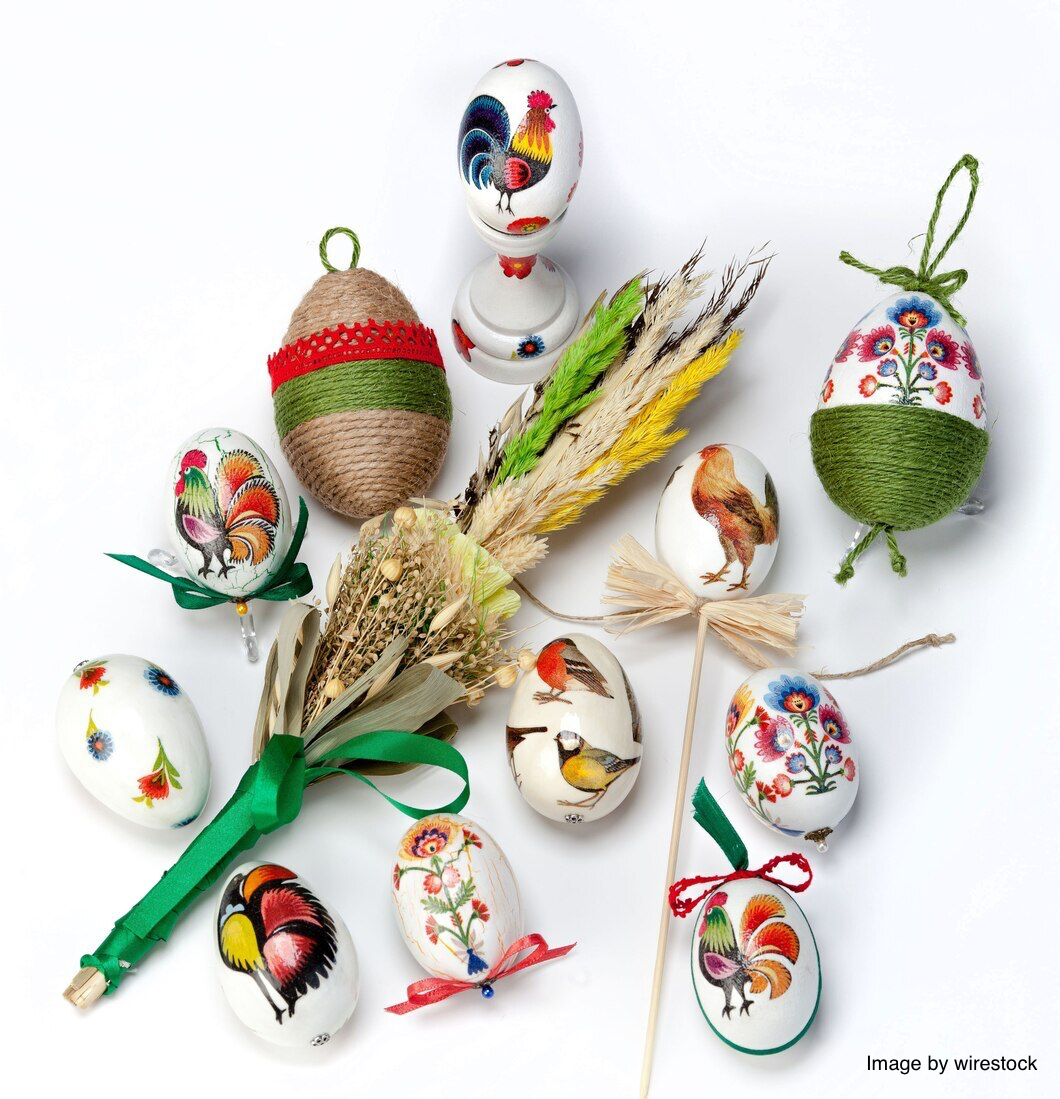“So we fix our eyes not on what is seen, but on what is unseen, since what is seen is temporary, but what is unseen is eternal.”
2 Corinthians 4:18
What are we living for?
As believers, our focus should remain on God; we aren’t living for this world but for Him. To live a life truly dependent on Him and choosing to serve Him in all that we do sounds great, but how might that look?
Alex and Miriam Reimer have first-hand experience with depending on God for their needs. Having left the comforts of their North American homes several years ago, Canadian Alex, and his American wife, Miriam, served in Germany then Northern Ireland—where they met, married, and ultimately served as missionaries. As they anticipated returning to North America, they felt compelled to expose what God can do through us when we set our eyes solely on Him.

While serving overseas with Greater Europe Mission, Alex’s ministry was in filmmaking. Working with Soul Catalyst, he found that creating videos was an excellent way to share the Good News with others.
“As artists, we speak different languages and can say different things, things we may not otherwise be able to put into words,” he starts. “This kind of started a hunger in me to portray the missionary experience [in a different way].”
With a return to Canada already on their horizon, the Reimers began their last assignment as missionaries in Europe. They left their home in Northern Ireland, bought a camper van, and set out on a journey through Europe to film several GEM missionaries live their day-to-day lives.
“The goal of this project is to show what it’s really like to be a missionary on the field,” Alex remarks.
Believers are used to hearing the powerful stories of how God has moved, and although you will see some of those moments, Alex emphasizes how this documentary highlights the other side of it. “You’ll see how these stories come out of long hours of faithfulness and weeks of just getting out of bed and doing the things needed to be done.”
Alex and Miriam spent two weeks with each missionary unit—Crystal and Matteo Scamporlino, Jill Corley, and Julie and Jivko Binev—capturing each day on video. “Every person we’ve been with has been such an amazing encouragement and picture of Jesus; they’re all great,” they reveal.
To ensure this documentary remained authentic, the Reimers didn’t go with an agenda.

“We just wanted to be present with these people and see what God was doing; then we would build the story from there.” Knowing that God works through the mundane, the Reimers ultimately wanted to see God in action while they were there.
“I learned a lot, as we went about, of how God works in the margins of things—that’s where the interesting stories are,” Alex starts. “In Bulgaria, we went to [and filmed] every scheduled thing the Binevs did but realized that the interesting things actually happened in the setup before and the takedown after…so much of what God does is actually outside of the plans that we have.”
The Reimers’ project confirms that as we keep our eyes fixed on Jesus, He will continue to show up, even when we aren’t expecting Him to.
“[A common factor we see is] how these missionaries take steps of faith and trust God with the end results,” Alex explains. “It’s not so much worrying about success, but just getting out there to do it!”
Julie Binev, one of the filmed missionaries, hopes this film will put a spark in its audience. “We pray the viewers recognize how God can use everyday people who simply say ‘yes’ to His call to make disciples.”
Watching Julie’s prayers over a school in Bulgaria get answered, witnessing Jill Corley bring hope to other widows in Romania, and hearing the Scamporlinos’ testimony of a healed boy’s family coming to church in Italy, we can see plenty of examples of God’s faithfulness shown through those who focus their eyes on Him.
“I think the story that came out of this [documentary] was just being faithful with what’s in front of you and being full of faith that God will work through it, leaving the results up to Him,” Alex concludes. “You do your work and God will do His work. I think all the missionaries that we connected with exemplified that, and that was really cool and encouraging to see.”
If you, too, would like to see what the life of a missionary in Europe looks like, or simply want to see how bold Christians are living out their faith, you can save the date to watch Things Unseen when it’s released—July 12—at gemission.org/things-unseen/.



